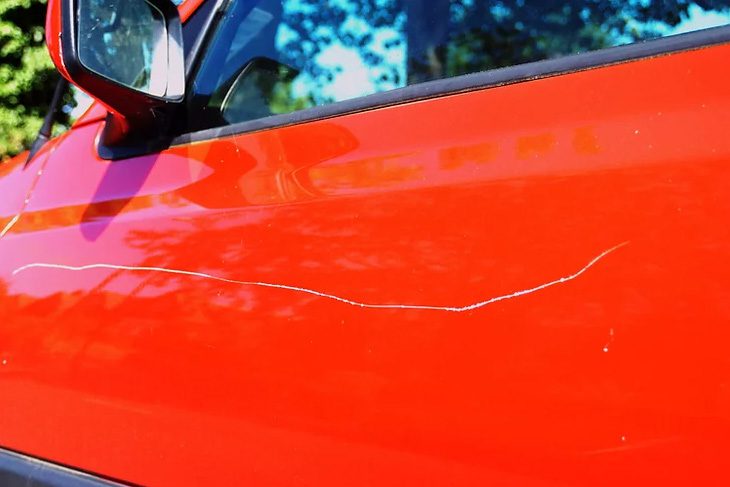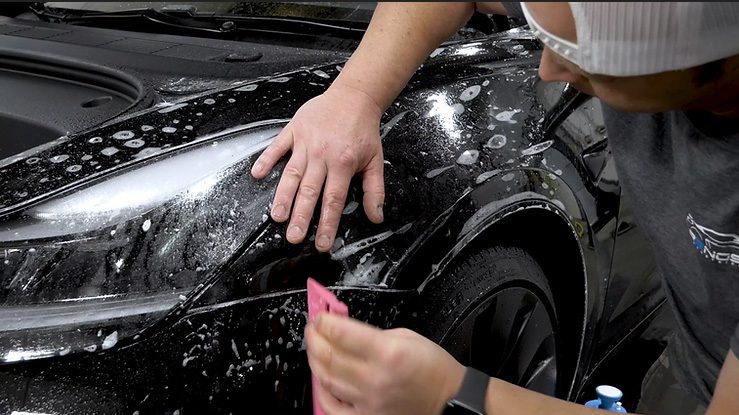10 Essential Tools for Installing XPEL Paint Protection Film
With the increasing popularity of paint protection film (or PPF, for short), vehicle owners are ever-more likely to investigate the benefits of installing PPF to their vehicles.
At Renoson Auto Films, we specialize in paint protection film installations and have installed film to hundreds of vehicles over 20 years.
The benefits of PPF far outweigh the initial investment and the paint protection capabilities of XPEL's lineup of products help our customers retain their vehicle's value for years to come.
Through our years of experience and specialized training, we have developed our own set of tips, tricks, and tools to help ensure that the installation process goes smoothly. We don't tolerate failures in our film installations and there are a variety of tools that we use to help accomplish this.
This post will go over the various categories of tools that we use to install XPEL paint protection film to the vehicles that come through our shop.
Squeegees
First and foremost, one of the most essential tools in the PPF installer's toolkit is the squeegee.

Squeegees come in a variety of shapes, sizes, colours, and hardnesses. The variation between squeegees allows the installer increased control in the installation to minimize seams, wrap edges, and reduce overall visibility and the likelihood of failure of the film.
The squeegees that we use are called Turbo squeegees. They are used to remove the slip solution (we'll cover this down below) from underneath the ppf to tack it into place. This, in combination with 99% isopropyl alcohol, is what allows the ppf's adhesive to stick to the vehicle.
For beginners, we generally recommend using a softer squeegee and working your way up as you get more comfortable with the tool.
You can find the squeegee that we recommend here.
Clay Bar
A clay bar is a detailing tool used to remove imperfections from the surface of the paint.

It is incredibly important to remove any contaminants or imperfections from the paint before you install paint protection film. If not, the installation will be more difficult and could potentially lead to failure down the road.
The contaminants may also be visible through the film, which would be unsightly.
Slip Solution
A slip solution is a mixture of soap and water to reduce the friction of the ppf during installation. We apply slip solution to both the vehicle's painted surface and the top of the film.

This allows the film to be positioned without having it stick prematurely. The slip solution applied to the top of the film allows the wet edge or squeegee to slide along the top without pulling the film out of position.
There are pre-made slip solutions available from various suppliers, however, we use Johnson's Baby Shampoo mixed with water.
The mixture can vary and you can experiment with preference. About three liberal drops into a sprayer, which is then filled with water, should be optimal for installing paint protection film.
Isopropyl Alcohol - 99%
99% isopropyl alcohol is used to speed up the process of adhesion and "tack" the film into place at the edges.

After you've soaked the vehicle panel in slip solution and positioned the ppf into the correct place, you'll need a combination of isopropyl alcohol and a squeegee to strategically stick certain points to keep the film from moving.
It's important to not squeegee through the points you've already tacked to prevent "ghosting" - when the soap dries underneath the film and leaves an unpleasant finish.
Sprayers
Another essential tool in the ppf installer's arsenal is a sprayer.

Sprayers come in various forms, the most common being trigger and pump sprayer.
We typically fill a pump sprayer with a slip solution and trigger sprayer with isopropyl alcohol. This helps differentiate the two and avoid spraying the wrong solution.
The size of the sprayer will depend on the size of the panel you're doing and also the ability to maneuver it during the installation of the ppf.
You can find the various sprayers we use here.
Hard Card or "Wet Edge"
The hard card or "wet edge" is a tool used when wrapping the edges of the film around the panel to which you're installing. All of the ppf kits that we install to our cars have wrapped edges to minimize dirt buildup and failure at the edges of the film.

The wet edge has a foam-lined side which you would use to slide along the film surface and roll the edge. You can find the one we use here.
TUTORIAL: Check out our YouTube channel for installation tutorials
30 Gauge Syringe
Although not used very often, a 30 gauge syringe is used to remove trapped water from underneath the film.

On occasion, water will get trapped underneath the film and you'll be unable to remove it with a squeegee. In this case, you'll need to extract the water directly from the bubble in the film using a syringe.
This is a delicate process and not to be used liberally as it can cause imperfections in the film.
Ultra-Slim Snap-Off Knife
Disclaimer: All of our kits are designed to be knifeless installations. There should be no need to cut on the car! This should only be done by trained professionals to prevent damaging the paint underneath.

Sometimes the ppf, which is made of urethane, will be stretched during installation. This leads to the ppf panel over-extending past the edge unevenly and leads to placement problems.
In the event this happens, there may be times when you need to use a knife to trim the edge of the film so it fits properly. This is something we very rarely do but if it needs to be done, there is no way around it aside from completely re-cutting the paint protection film pattern.
The knife that we recommend for ppf installations can be found here.
ProBond Adhesion Promoter
Although XPEL ppf has an adhesive underside layer which generally provides enough adhesion to stick to the vehicle, there may be times when you need to line edges of a panel with an adhesion promoter.

The adhesion promoter ensures the edges of the ppf stay down and don't lift over time.
An example is when ppf is installed on door panels and the edges are wrapped underneath the bottom of the door. As the vehicle travels along the road, dirt and water can be kicked up and force their way into the seam of the film. If the seam is not properly adhered, it can start to lift and the dirt will affect the adhesion of the film and the whole panel will need to be replaced.
Heat Gun
The heat gun is not used during installation. You do not need to stretch the film or heat it up in any way in order to install it.
After we've successfully installed the ppf on the car, we like to leave the car overnight in our shop to dry.
99% of failures occur within the first 24 hours and if edges are going to lift, they will lift during the night. By keeping the vehicle in our dust-free facility, we can then re-set the edge (if needed) and apply heat to all of the edges to promote adhesion.
By using heat on the edges, it allows the adhesive to stick more securely and prevent edge lifting for years after installation.
In Summary...
We hope this list of essential tools was helpful. We have also put together a full YouTube playlist of paint protection film installation tutorials - from start to finish.
Although the tutorials primarily focus on the Tesla Model 3, the principles can be applied to any vehicle.
If you like this content, please subscribe to our mailing list and follow us on our social media channels!






